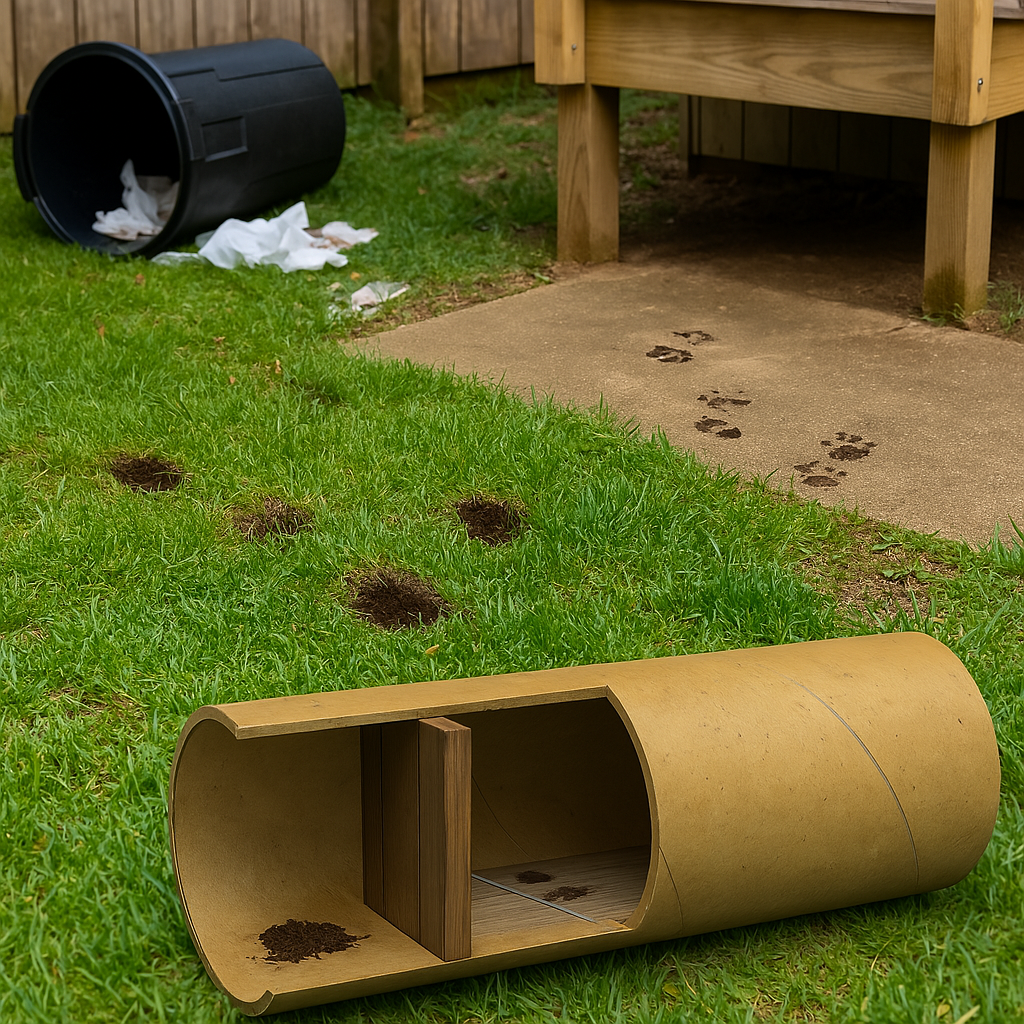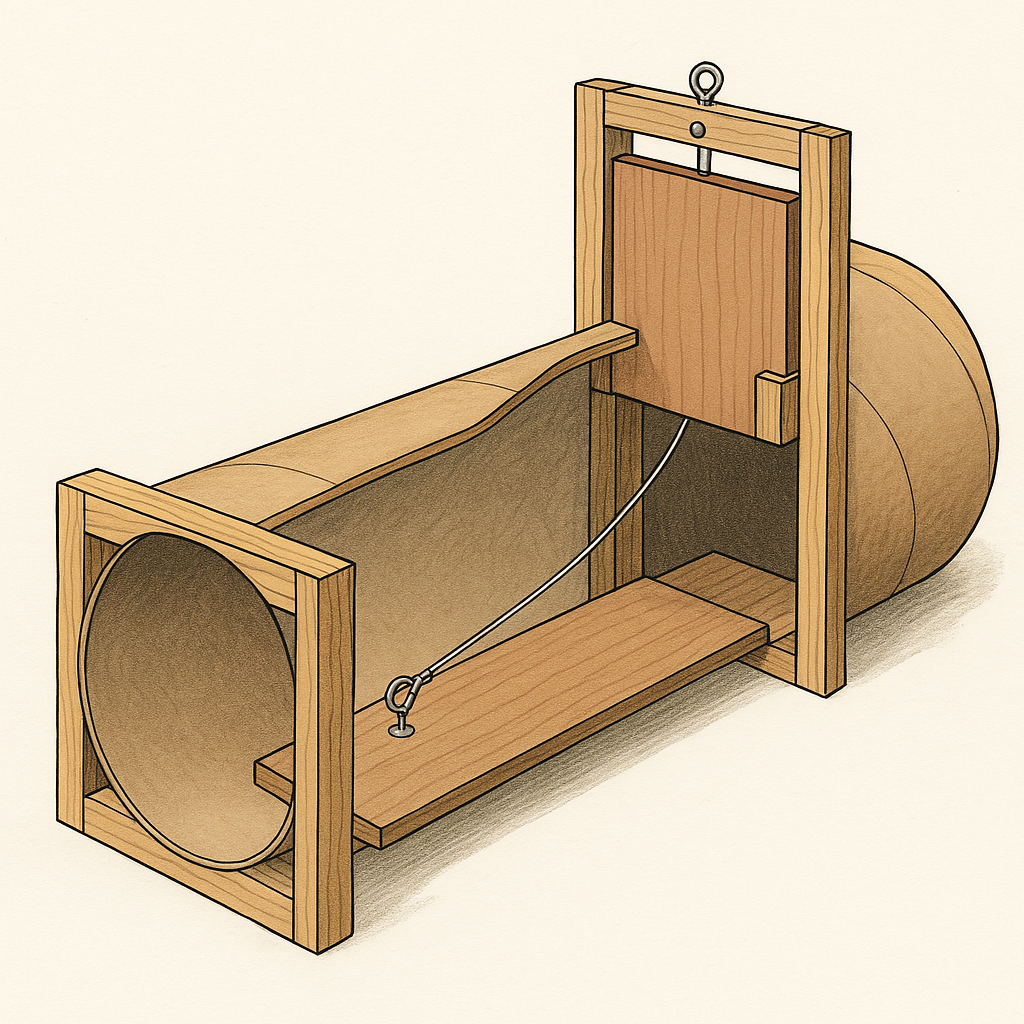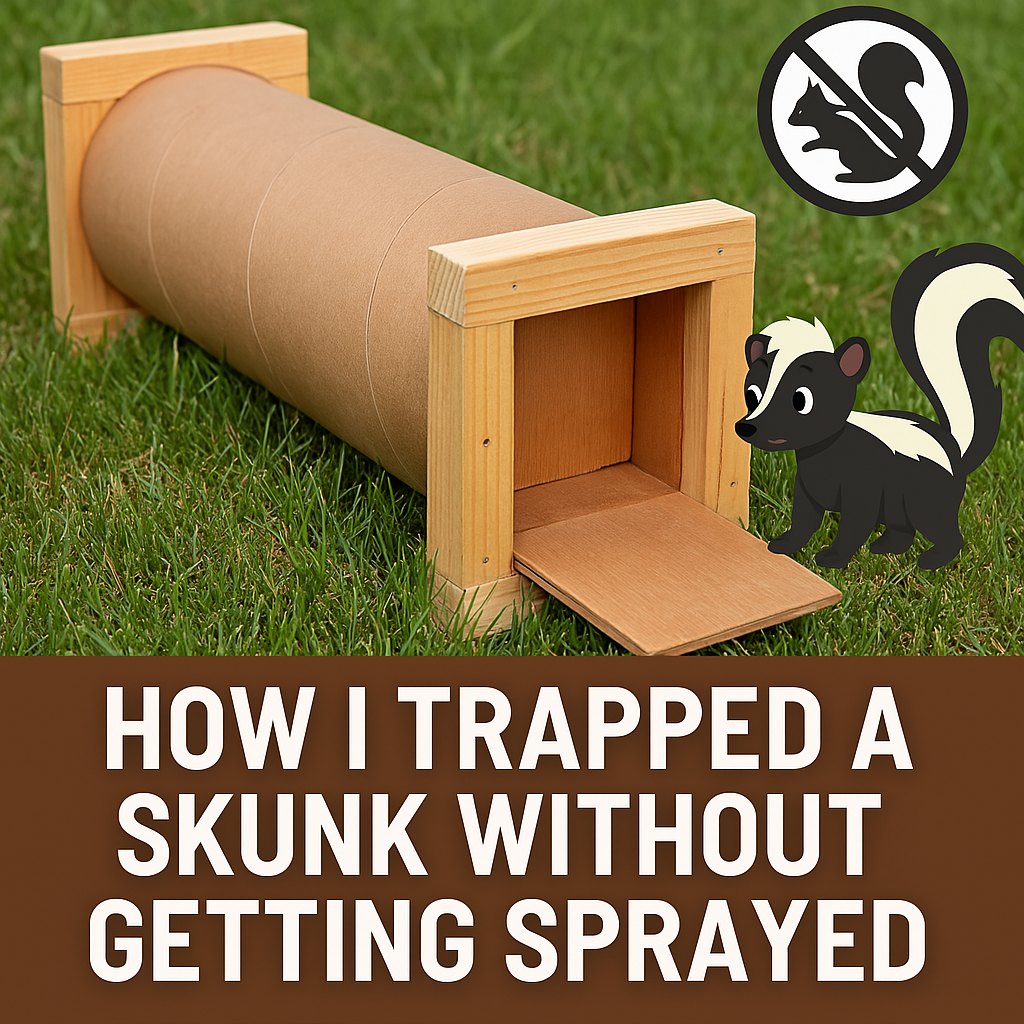It started with a smell. Not a subtle one either — the kind that punches you in the face the second you open the back door.
At first, I thought maybe the neighbor’s dog had found something rotten. But then I noticed the little cone-shaped holes all over the yard. My trash bin had been tipped over two nights in a row. And worst of all? My dog came running inside one morning, foaming at the mouth from what I thought was a rabid possum attack. Turned out, she got nailed — full blast — by a skunk hiding under the deck.
That was my wake-up call. I knew I had to do something fast. What follows is the exact process I went through to build a homemade skunk trap, use it safely, and get rid of that smelly visitor without ever getting sprayed myself. If you’re dealing with the same situation, this guide is for you.
How I Knew There Was a Skunk Living on My Property

Skunks aren’t exactly social animals — they like to keep to themselves, especially during the day. But here’s what tipped me off:
- Small holes in the grass, about the size of a golf ball
- A faint musky odor that never seemed to go away
- Trash mysteriously ripped open overnight
- Scratching sounds under the deck around 10 p.m.
One night, I saw the culprit wobble out under the moonlight. A full-sized adult skunk — bold as anything, sniffing around the shed. I didn’t sleep well after that.
What Didn’t Work (But I Tried Anyway)
Like most people, I started with all the natural repellent advice you find online. Here’s a quick breakdown:
| Method | Result |
|---|---|
| Citrus peels | Smelled nice to me. Didn’t do a thing to the skunk. |
| Ammonia-soaked rags | Mildly effective. The smell faded too fast. |
| Coffee grounds | Skunk may have eaten them. Who knows. |
| Dog urine | Tried walking my dog by the deck. The skunk didn’t care. |
I will say one thing that did help a bit: I bought a bottle of predator urine granules, sprinkled it around the perimeter, and noticed the activity slowed down. Not gone—but reduced.
Still, by week two, the skunk was getting bold. So I decided it was time to trap and relocate it.
Building the Homemade Skunk Trap (From Junk I Had in the Garage)
I wasn’t about to drop $80 on a live animal trap if I could build something myself. Here’s what I found worked best:
What You’ll Need:
- One cardboard concrete form tube – 12″ diameter, 4’ long
- Scrap 2x4s and ¼” or ½” plywood
- Plexiglass (optional but super helpful)
- A few screw eyes, wood screws, string, and basic tools
- A chunk of coat hanger wire for the trigger pin
The concrete form tube was perfect because it’s sturdy enough for a skunk but light enough to move without a team of oxen. If you don’t have one, they’re cheap online — or this commercial live trap on Amazon is a good fallback.
Step-by-Step Build
1. Frame the ends of the tube.
I cut two square frames out of 2x4s, sized to fit the ends of the tube. One end I screwed shut. The other end got a channel to hold a sliding door. I used strips of ¼” plywood on either side of the opening to make the track.
2. Cut a sliding door.
From ½” plywood, I made a door just under 12″ tall and 11.75″ wide. Waxed the edges with candle wax so it would slide smooth. Drilled a hole at the bottom for the trigger string.
3. Trigger mechanism = dead simple.
I used a piece of scrap wood (maybe 2.5 feet long) as a pressure board inside the tube. A string ran from this board to a coat hanger “pin” holding the door up. When the skunk stepped on the board to get to the bait, the pin popped out and the door dropped.
4. Plexiglass back panel.
This one was optional, but I cut a square of Plexiglass for the back so I could peek in without opening anything. That helped a LOT — especially when deciding whether to release or wait.

What I Used for Bait (This Part Matters)
Skunks are omnivores. They’ll eat just about anything. But you want something smelly enough to lure them in from 10 feet away.
Here’s what I tested:
- Canned tuna (works fast, but attracts cats, too)
- Cooked bacon (they loved it, but I kept stealing it)
- Peanut butter on bread (sticky and effective)
- Canned dog food (this was the winner)
I ended up using a spoonful of wet dog food placed on a small plastic lid just behind the trigger board. That way, the skunk had to step on the pressure plate to reach it.
Catching the Skunk (and Not Getting Sprayed)
The first night I set the trap, nothing happened. Second night? I woke up at 6 a.m. to a thumping sound and that tell-tale odor — but not strong. More like a warning puff.
I peeked through the Plexiglass: one slightly annoyed skunk, pacing in circles.
Here’s how I handled it:
- Slowly covered the trap with a towel (keeps them calm — skunks are practically blind).
- Gently loaded it into the back of my pickup.
- Drove 12 miles out to a wooded area by a creek.
- From about 10 feet behind the trap, I tugged the release string.
- The skunk waddled out. Didn’t even look back.
I stood there for a second, expecting to be hit with a cloud of horror—but nothing. Just silence, fresh air, and a slightly awkward victory fist-pump.
A Few Quick Tips from My Experience
- Check your local laws before relocating wildlife. In some places, it’s illegal.
- Don’t reuse the trap until it’s cleaned out with a bleach-water mix. The scent can attract—or repel—other animals.
- Avoid releasing near homes, parks, or public land. Pick a remote, wooded area.
- If you’re nervous about the build, this trap does the same thing without the DIY headaches.
Final Thoughts
I won’t lie: building a homemade skunk trap wasn’t my first plan. I thought I could outsmart the skunk with citrus and cayenne pepper. I thought maybe it would just… move on.
But once I took action, I fixed the problem in 48 hours. No sprays. No injuries. Just one confused, relocated skunk—and a story I’ll probably keep telling every time I smell that musky funk in the air.




